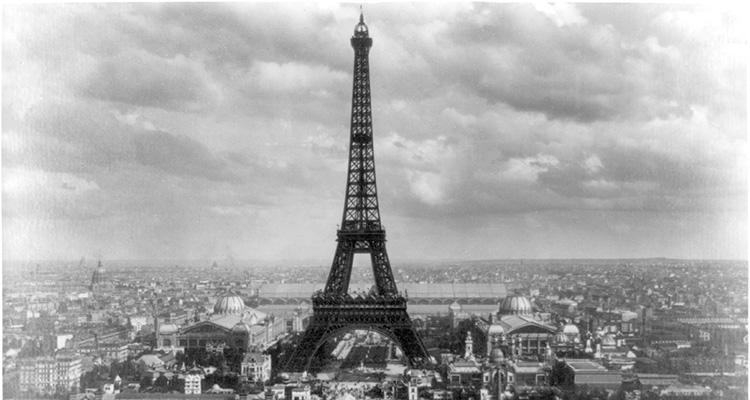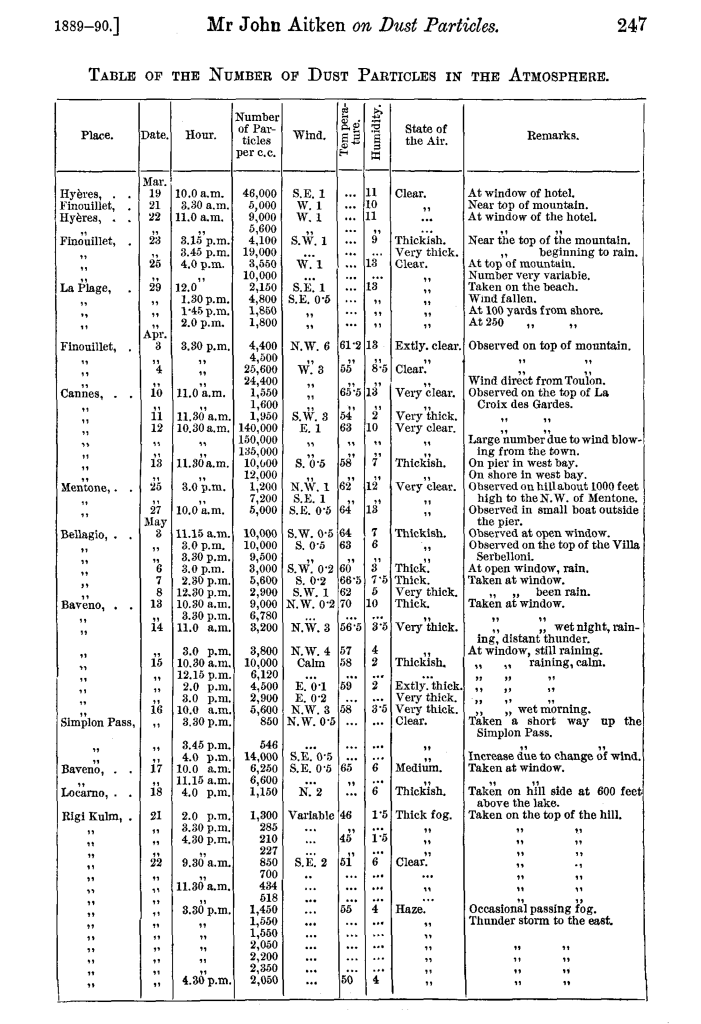On May 29th, there were 52,000 nanoparticles per cubic centimeter of air measured at the top of the Eiffel Tower.
This may not seem the most compelling opening to an article, until you realize that the measurement was made in 1889 – over 100 years before nanotechnology and nanoparticles began hitting headlines as one of the most talked about emerging technologies in recent decades.
The particles were measured by the Scottish scientist John Aitken, using his newly developed device for counting airborne dust particles.
In 1888, Aitken described an apparatus for counting airborne particles in the journal Nature that are
“not only invisible, but are beyond the highest powers of the [light] microscope.”
His device condensed water onto fine particles in the air, and allowed the droplets to fall onto a surface, where they could be could counted.
Originally called “Aitken nuclei”, we now know these particles were nanometer sized atmospheric particles: Aitken had invented the first nanoparticle exposure monitor.
It didn’t take Aitken long to design a portable version of his counter, which he proceeded to take across Europe, measuring airborne nanoparticle concentrations as he went.
This is beautifully captured in an 1891 paper in the Proceedings of the Royal Society of Edinburgh – readable here (and highly recommended).
The paper was descriptively titled “On the number of dust particles in the atmosphere of certain places in Great Britain and on the Continent, with remarks on the relation between the amount of dust and meteorological phenomena. (With three plates)”.
Aitken’s paper is charming – it’s clearly from a previous era in science publications – and describes what is in effect the scientific adventures of a Scottish scientist abroad.
It also presents rigorous and groundbreaking research on nanoparticle concentration measurements, which is perhaps more relevant today than then, as we learn more about the role and impact of nanoparticles in the air.
The paper starts:
“As the construction of this portable apparatus was completed just as I was about to start for the Continent, the opportunity seemed a favourable one for continuing the investigation into the number of dust particles in the atmosphere, and extending our knowledge on the subject in other countries. The portable apparatus is reduced to such dimensions that it adds but little to one’s personal luggage, and can be easily carried to’ the place where the observations are to be made.”
Aitken’s measurements – on top of European mountains, and landmarks such as the Eiffel Tower – established a baseline for atmospheric nanoparticle concentrations in Europe in the late 1880’s.
The rigor of his work is apparent in his documentation – here for example is the first page of his data on particle number concentrations:
Aitken’s portable dust counter went on to be widely used for the next 50 years. It created a legacy of nanoparticle measurement that far preceded the invention of the term “nanoparticle”. And it established the working principles of nearly every device currently in use for measuring the concentration and size of airborne nanometer diameter particles.
As well as being historically interesting, Aitken’s work is an important reminder that technology for measuring airborne nanoparticle concentrations has been around a lot longer than anyone reading this piece.
In June’s issue of the journal Nature Nanotechnology, I take a look back at Aitken’s work, and one other technology – electron microscopy – that for several decades have provided the means to allow detailed nanoparticle characterization. They challenge a myth that’s sometimes aired that engineered nanoparticles are so new and novel that we don’t have the means to characterize them, or measure exposures.
I think that if John Aitken was still around, he would beg to differ.
“Learning from the Past” is published in the June issue of Nature Nanotechnology. If you are in the US, it can be accessed for free here.
Learning from the past. Andrew D. Maynard. Nature Nanotechnology 10, 482–483 (2015) doi:10.1038/nnano.2015.120
Feature image: Eiffel tower at Exposition Universelle, Paris, 1889. Source: Wikimedia Commons.


